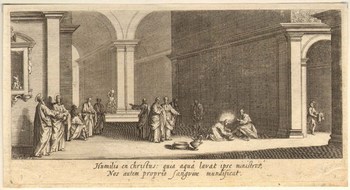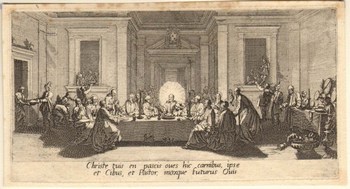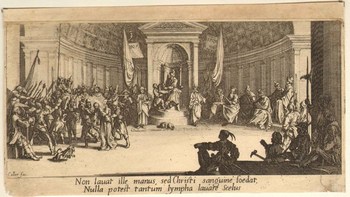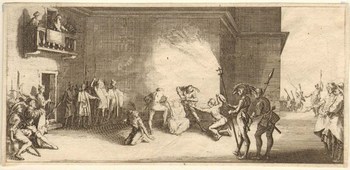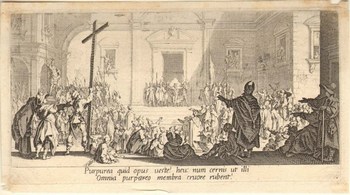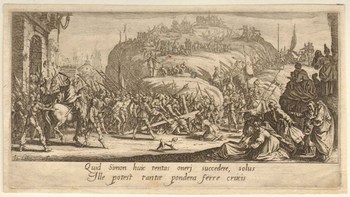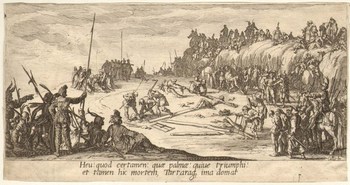LA GRANDE PASSION
Complete series of seven plates depicting
episodes of the Passion.
The compositions were probably designed in
Florence and engraved over several years,
from 1619 to 1624, with the likely help of
his workshop on some of the plates.
The set was meant to include more than just
seven plates: there are 13 preparatory
drawings, plus the Last Supper, which has
been engraved but for which no sketch has
been found.
The
etchings below are from an early states. The
first state available on the market.
There is occasionally only state before but that was
'before the text'
The states are before the publishers address
of 'Silvestre'
The guidelines for the text still visible in
L.283 en L.286 confirm these are very early
impressions.
The watermarks on L.282 (N°30= interlaced
C's) and L.285 (N°39= Le Lion a
L'étoile) are described by Lieure.
